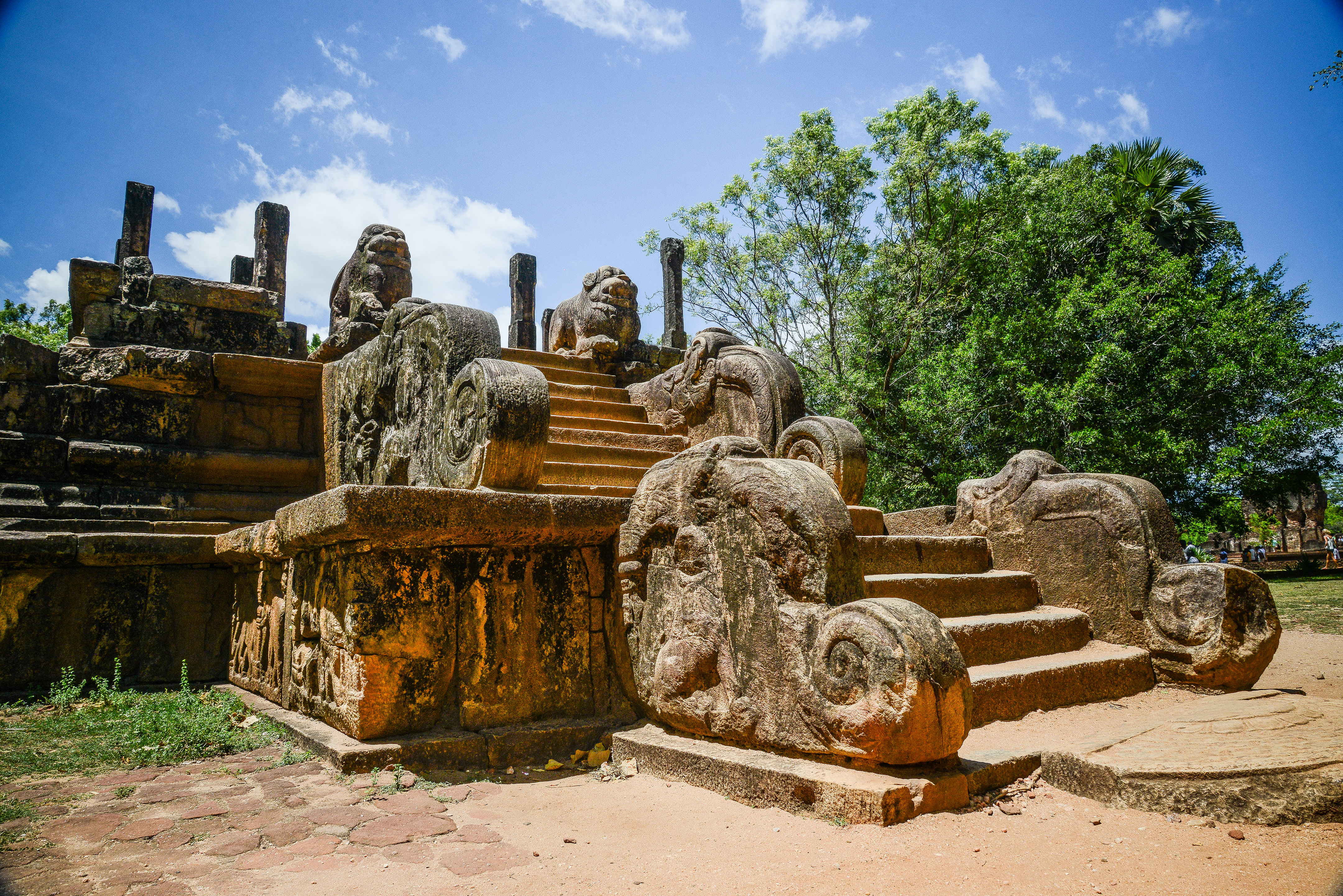Sri Lanka’s famous Cultural Triangle is derived from a collection of royal cities, Buddhist Temples and ancient monuments that was once the early Sinhalese civilization. Kandy, Anuradhapura, and Polonnaruwa are the 3 main historic capitals which make up the cultural triangle. Within this triangle there is also the astounding Sigiriya rock, the cave temples in Dambulla and the heart of Buddhism in Mihintale. A cultural tour of Sri Lanka arranged by our skilled consultants at Blue Lanka Tours will include all these attractions to allow visitors to absorb the unique culture and history of Sri Lanka.
Not to Miss
- Observe the wonderful ruins of Anuradhapura & Polonnaruwa
- Climb and explore the giant rock fortress of Sigirya
- Be amazed at the beautiful cave paintings and Buddha statues in Dambulla
- Be in Mihintale during Wesak (festival to celebrate birth and death of Lord Buddha)
- Take a bicycle stroll on peaceful minor roads by lakes and paddy fields
Major Cities
Anuradhapura
The ancient city of Anuradhapura is known as the Buddhist capital of the country and is home to a collection of popular religious sites.
- Monasteries built during the city’s height of prominence. Popular ones are Mahavihara, Jetavana and Abhayagiri.
- The sacred Bo Tree at the heart of Anuradhapura. Sri Maha Bodhi is believed to be the oldest living tree in the world. This tree is also the site where Lord Buddha received Enlightenment.
- Remains of the Brazen Palace. 1600 stone columns are neatly spaced out, the highest being the red-brick dagoba of Jetavana; supposedly the highest in the world.
Polonnaruwa
From the 11th to 13th century, Polonnaruwa was the capital of the country and because of this long period of prominence, we see several great ruins here. Today, the city represents medieval Sri Lanka at its best.
- The shallow reservoir of Parakrama Samudra.
- The royal palace complex at the center of the city. Walls have been restored to protect the Council Chamber and Royal Baths.
- North of this complex is the Monastery of Cremation Grounds (Alahana Pirivena). Many of the city’s finest ruins are found here.
- Amongst other ruins, the most popular one here is the Lankatilaka Temple. The brick walls of this temple are 17 meters high.
- A group of stone shrines with beautiful rock carvings of Lord Buddha.
- A collection of four Sinhalese rock carvings of Buddhas in various positions: 14m long reclining, 7m tall standing and two seated postures of Lord Buddha. These carving are laid out against a backdrop or astonishing artwork.
Kandy
After Colombo, Kandy is Sri Lanka’s second biggest city, beautifully set surrounding a man-mad lake. Kandy has a rich and long history because this city was able to resist colonial forces for longer than the rest of the island. Hence it has retained some unique traditions and is considered the cultural capital of Sri Lanka.
- Temple of the Sacred Tooth Relic houses Buddha’s Tooth, which was brought in during the 16th century. A two storied shrine topped with a golden roof canopy protects this Tooth.
- An awe-inspiring, colorful, bright and vibrant Esala Perahera takes place every year to honor the Sacred Tooth Relic. Costumed elephants, dancers, drummers, whippers, fire dancers, stilt walkers and more talents are exhibited in the grand procession.
Sigiriya
Sigiriya is a town situated in the dry-zone of central Sri Lanka. Many centuries ago, one of the Kings of Sigiriya built his palace complex at the top of the rock and the remnants of this is kept intact till today. Known as the “Lion’s Rock”, tourists consider it an exciting activity to climb to the top. On the way, you will come across beautiful frescoes carved into the insides of the rock. The entrance of the fortress is passing a Lion’s Paw, which is a spectacular sight today. At the top you will find remnants of the Royal Palace and a beautiful view of Sri Lanka’s nature.
Dambulla
At the heart of the cultural triangle is the town of Dambulla, which boasts well preserved cave temples dating back to the 1st century BC. A large rock covers the cave temples and partition walls are built to separate every individual temple. Although the site has been remodeled and repainted many times over the years, the style and appearance of the art has been consistent.
- Cave 1 – 15m long resting Buddha carved from solid rock.
- Cave 2 – largest cave with more than 150 life size statues and images of Lord Buddha. Ceilings and walls are covered with fantastic murals depicting historical events.
- Cave 3 – meditating Buddha carved from solid rock and interesting murals.
- Cave 4 – noted for the Dagoba at the centre.
- Cave 5 – smallest cave with brick and plaster statues of Buddha.
When visiting the cave temples, start in reverse order so you can end with the most impressive one.
Mihintale
Mihintale is a mountain peak, where Buddhism was born. The Temple complex here consists of shrines and rock dwellings as old as the 2nd century. While climbing to the summit, you can see:
- Kantaka Chetiya Dagoba – unique stonework and friezes
- A stone aqueduct with two granite troughs
- Two large stone tablets with engravings of monastery rules and regulations
- Ambasthala Dagoba – Mihintale’s sacred centre
- A large white painting of Buddha, raised from a platform
- Mahaseya Dagoba – the largest of them all
- Naga Pokuna – ‘Snake Pond’: a five headed cobra carving

